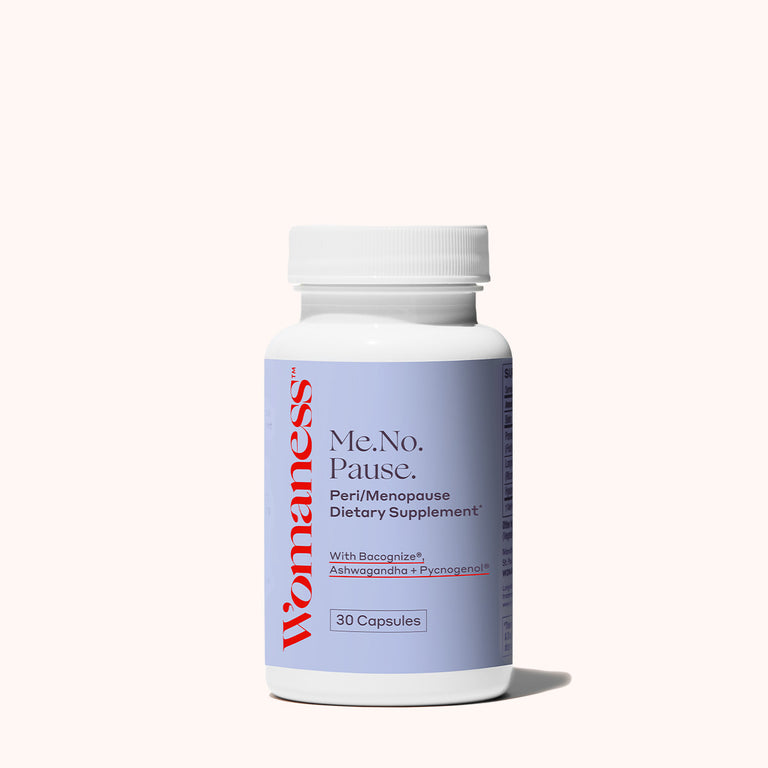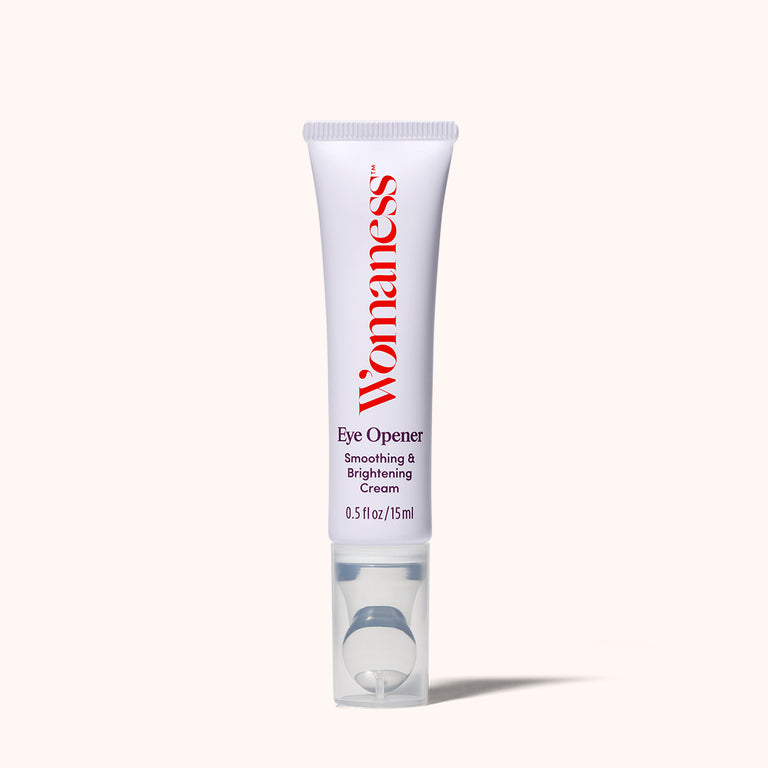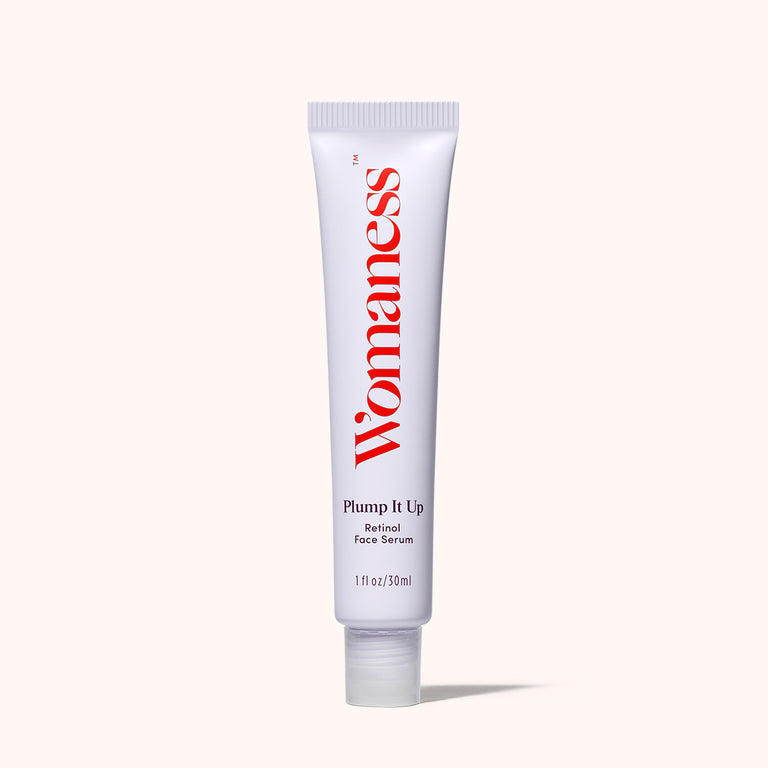By Michelle Jacobs 4-Minute Read

In the four years since we started Womaness, I've been asked countless times why we started a company focused on women in midlife, perimenopause, or menopause. And I am always happy to answer about the opportunity we saw and the fact that there were no modern, clean brands addressing the needs of women in the post-fertility years.
What bothers me, however, are the people who ask the same question in a cynical or negative way. They don’t get it, see it, or understand it.
It was very clear to me when we launched Womaness that this brand was needed. But now that I am 52, literally IN perimenopause, and thisclose to menopause, I see it even more clearly.
It’s so clear it almost hurts.
Here are the four questions we get asked by the naysayers—and my answer that addresses them all below.
1. Menopause is just hot flashes. What else do you need?
2. Do you need special products for peri and menopause?
3. Is this even a category?
4. Aren’t you just capitalizing on health issues that have been around forever?
Oh, where to begin?
First (and I am living this as I type), perimenopause and menopause are not only hot flashes. This phase is so many things, including: sleep issues, weight gain, dramatic skin issues, stomach and digestion issues, bone density changes, muscle mass changes, hair thinning, vertigo, tooth and gum changes, low libido, vaginal dryness, eyesight, pelvic floor changes, mental health, cancer scares, and more.
Does this sound like one doctor visit? It isn’t. One product? It’s not. Only HRT? Nope.
Does this sound like one doctor visit? It isn’t. One product? It’s not. Only HRT? Nope. This is a complex, confusing, sometimes scary period of life and it can go on for years. If you are dealing with this stage, you, as the patient/customer/person, are trying to figure it all out. This will include visiting multiple doctors, going to your local retailer, talking to friends, and Googling for answers.
So to answer some of the questions, yes, this is a category, and yes, we need many different products and resources to help. And more importantly, there are not enough products, resources, or doctors to serve this category. I hope more companies, clinicians, and retailers enter this space. It’s huge and needs more.
Second, you have to wonder: Why are things like this? We all know women over 40 and 50 have been largely ignored. This includes women’s health as well. The pathetic lack of investment, research, clinical studies, and product development means there have not been a lot of newly researched ingredients or companies with the funding to create new products. The result of this is that retailers didn’t have new products to launch or include in their assortments. Most retailers have had Vagisil, Summer’s Eve, Replens, and Estroven on the shelves for decades.
That was it. There were no other options for women.
Today, however women, like us, have worked for 25+ years and know how to formulate products. And we want better, cleaner, more efficacious product—so YES, finally we can develop new products with new, clinically tested ingredients. And we can now do better, but there’s still so much more we can do. We are not just trying to “gold mine” the menopause industry. We are trying to provide women with clean products that work with modern research behind them.
We are not just trying to “gold mine” the menopause industry. We are trying to provide women with clean products that work with modern research behind them.
Another cultural shift affecting the increased need for products and services for women in midlife? Millennials are aging into perimenopause. These women are different from Gen X and Boomers. Many millennials explored their sexuality in different ways, shared their life journeys on social media, used IVF to get pregnant, and demanded more from their doctors. At the same time, more research is becoming available saying that HRT is not as dangerous as once thought. This means millennials will not just “accept” menopause as status quo. They will not be slowing down. They want to continue their healthy, high-energy lives. They also want to—and often, have to—remain working longer. All this combined to say that we MUST develop better solutions for the multitude of menopause symptoms women encounter as we age.
Once again, I will repeat: this opportunity is huge and needs more. There are simply not enough brands.
So here I am. 52 and perimenopausal. I have SIBO, acid reflux, weight gain, and skin changes. My eyesight just got dramatically worse and I need readers. My shoulder and knee hurt. I am convinced my fascia is twisted on my left side. I don’t sleep and I just had my very first hot flash. I have seen five different doctors for these issues, and I take 11 supplements a day. Don’t even ask me what insurance has covered.
The next time you want to know if menopause is a category, come knock on my door. So why did we start Womaness? Because we had to. And for those that don’t get it, just move aside. You are wasting time.
So why did we start Womaness? Because we had to.
More For You
Your Top 5 Questions About Midlife
Our Top Menopause Resources
5 Ways Companies Can Support Women in Menopause






